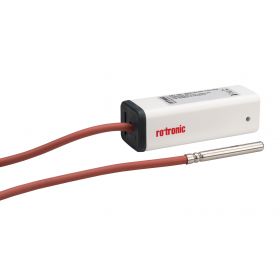
A pharmacy, chemist’s or drugstore is a physical location that, amongst others, distributes medication for patients. The distribution is subject to pharmacy legislation and pharmacies fall under the Good Distribution Practice (GDP) quality guidelines that are developed by the regulatory authorities and are designed to cover the product quality over the complete life cycle of the product.
GDP describes the minimum standards that must be met to ensure that the quality and integrity of medicines is maintained throughout the supply chain. GDP applies to sourcing, storage and transportation of active pharmaceutical ingredients and other ingredients used in the production of medicines. Here are some of the GDP guidelines/regulations:
- WHO Annex 5: Good Distribution Practices for pharmaceutical products.
- The EU GDP guidelines are defined by the European Commission: Guidelines of 5 November 2013 on Good Distribution Practice of medicinal products for human use.
- FDA 21 CFR Part 211 Current Good Manufacturing Proactive for Finished Pharmaceuticals.
- USP<1079> Good Storage and Distribution Practices for Drug Products.
Typically, standalone temperature indicators or loggers are used and the monthly minimum and maximum temperature charts as well as daily temperature charts are done either by hand or by taking the logger to a PC to download the data.
Customer application
Recommended Products
-
RMS-LOG-T30-L - Data Logger
The RMS-LOG-T30 is a data logger with two integrated analog-to-digital converters, to which two PT100 sensors can be connected for high-precision temperature measurement.
Learn More -
RMS-LOG-T30-868
The RMS-LOG-T30 is a data logger with two integrated analog-to-digital converters, to which two PT100 sensors can be connected for high-precision temperature measurement.
Learn More -
RMS-LOG-T30-915
The RMS-LOG-T30 is a data logger with two integrated analog-to-digital converters, to which two PT100 sensors can be connected for high-precision temperature measurement.
Learn More -
RMS T30-0001
The T30 temperature sensors are resistance thermometers (Pt100 = positive measurement resistance), meaning that the resistance increases with increasing temperature. The sensors are compatible with the RMSLOG- T30-L, RMS-LOG-T30-868 and RMS-LOG-T30-915 data loggers.
Learn More -
RMS T30-0003
The T30 temperature sensors are resistance thermometers (Pt100 = positive measurement resistance), meaning that the resistance increases with increasing temperature. The sensors are compatible with the RMSLOG- T30-L, RMS-LOG-T30-868 and RMS-LOG-T30-915 data loggers.
Learn More -
RMS T30-0006
The T30 temperature sensors are resistance thermometers (Pt100 = positive measurement resistance), meaning that the resistance increases with increasing temperature. The sensors are compatible with the RMSLOG- T30-L, RMS-LOG-T30-868 and RMS-LOG-T30-915 data loggers.
Learn More -
RMS-MLOG-T10-868 - Wireless Mini Data Logger - Temperature with external (NTC) probe
Small, inexpensive and flexible
Learn More -
RMS-MLOG-T10-915 - Wireless Mini Data Logger - Temperature with external (NTC) probe
Small, inexpensive and flexible
Learn More -
RMS T10-0001
The T10 temperature sensors are NTC (Negative Temperature Coefficient) thermistors, meaning that the resistance of the NTC decreases with increasing temperature.
Learn More -
RMS T10-0002
The T10 temperature sensors are NTC (Negative Temperature Coefficient) thermistors, meaning that the resistance of the NTC decreases with increasing temperature. The T10 temperature sensors are compatible with the RMS-MLOG-T10-868/915 data loggers.
Learn More -
RMS T10-0003
The T10 temperature sensors are NTC (Negative Temperature Coefficient) thermistors, meaning that the resistance of the NTC decreases with increasing temperature. The T10 temperature sensors are compatible with the RMS-MLOG-T10-868/915 data loggers.
Learn More -
RMS T10-0004
The T10 temperature sensors are NTC (Negative Temperature Coefficient) thermistors, meaning that the resistance of the NTC decreases with increasing temperature. The T10 temperature sensors are compatible with the RMS-MLOG-T10-868/915 data loggers.
Learn More -
RMS T10-0005
The T10 temperature sensors are NTC (Negative Temperature Coefficient) thermistors, meaning that the resistance of the NTC decreases with increasing temperature.
Learn More -
RMS T10-0006
The T10 temperature sensors are NTC (Negative Temperature Coefficient) thermistors, meaning that the resistance of the NTC decreases with increasing temperature. The T10 temperature sensors are compatible with the RMS-MLOG-T10-868/915 data loggers.
Learn More -
RMS T10-0013
The T10 temperature sensors are NTC (Negative Temperature Coefficient) thermistors, meaning that the resistance of the NTC decreases with increasing temperature. The T10 temperature sensors are compatible with the RMS-MLOG-T10-868/915 data loggers.
Learn More -
RMS T10-0113
The T10 temperature sensors are NTC (Negative Temperature Coefficient) thermistors, meaning that the resistance of the NTC decreases with increasing temperature. The T10 temperature sensors are compatible with the RMS-MLOG-T10-868/915 data loggers.
Learn More





















